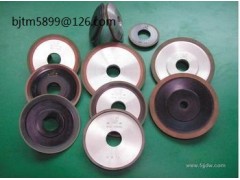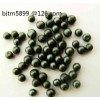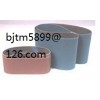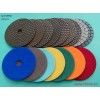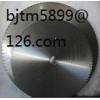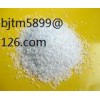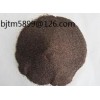The type of material and size of particles used generally determines the abrasiveness of the surface, and cutting action of the grinding wheel. The most common families of materials used for the abrasive particles are silicon carbide and diamond. There are many variants of these abrasive materials, like ceramic aluminum oxide and boron carbide, for example.
Selecting the right grinding wheel for a specific application is primarily determined by the hardness of the material being cut. The abrasive material, bonding agent, density, grade, and grain-size are all also key considerations. The physical size of the abrasive particles, known as grain-size, will affect the cutting performance of the grinding wheel. A fine grain will remove less material, and is normally used for polishing and to achieve a fine surface finish. A large grain-size will cut material quickly, but create a rough surface finish.

